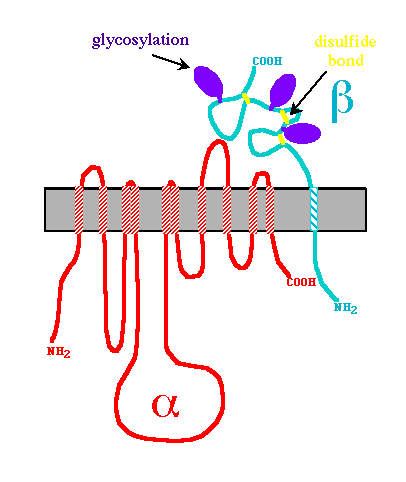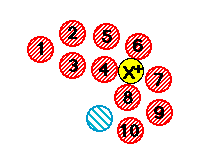
It has been known for several years that the a-subunit, which is the subunit that actually pumps the Na+ and K+ ions, cannot reach the plasma membrane in the absence of a ß-subunit. During translation in the rough ER, the two subunits somehow find each other and interact to form the correct quaternary structure which allows them to exit the ER and to target the plasma membrane. Figure 1 is a cartoon that depicts what we think the two subunits look like when they are in the proper quaternary conformation to reach the plasma membrane.

Figure 1. The a subunit (red) is composed of about 1000 amino acids and is shown to span the membrane (gray box)10 times. The ß subunit (blue) is composed of 305 amino acids and has three disulfide bonds (yellow bars) and three N-linked glycosylations (purple).
Through a lot of mutagenesis studies on this and other ion pumps, it is believed that membrane spanning regions 4, 6, 7, and 8 interact with the ions being transported. A good model for sodium subunit packing in the membrane is shown in figure 2.

Figure 2. A cartoon depicting a crossectional view of the current model of how the membrane spanning regions of the a (red ) and ß (blue) subunits are packed together to form a functional ion pump. The charged cation (yellow) interacts with R-groups on transmembrane regions 4, 6, 7 and 8.
Return to Molecular Biology Home Page
© Copyright 2000 Department of Biology,
Davidson College, Davidson, NC 28036
Send comments, questions, and suggestions to: macampbell@davidson.edu